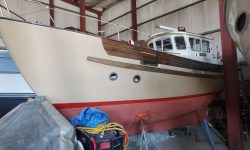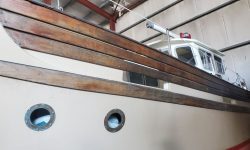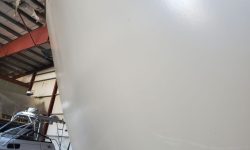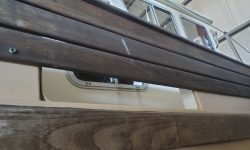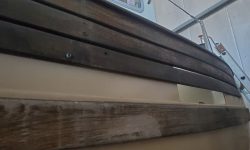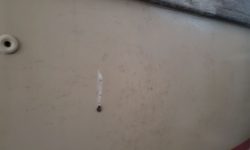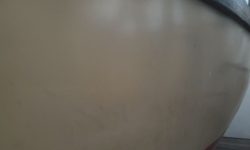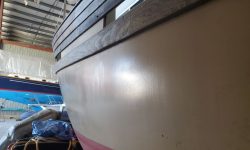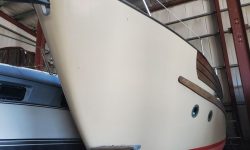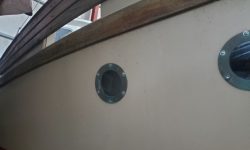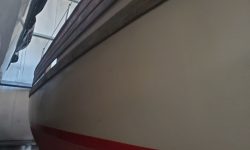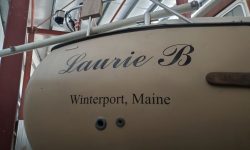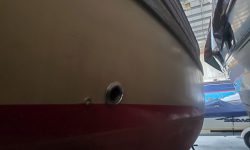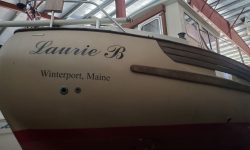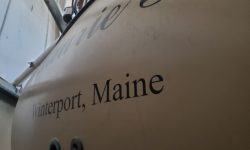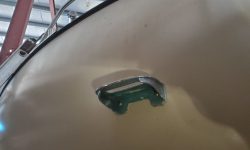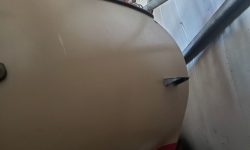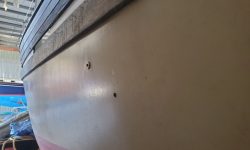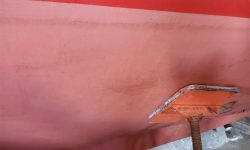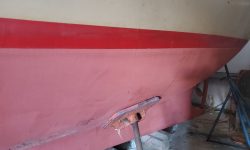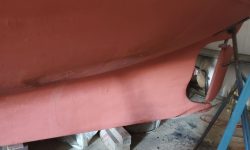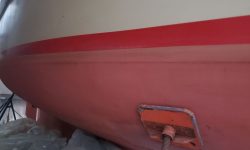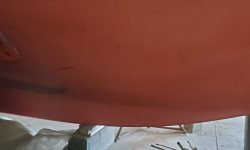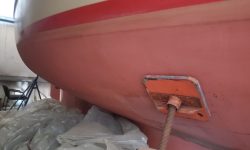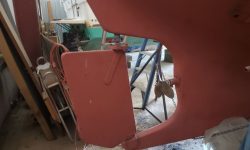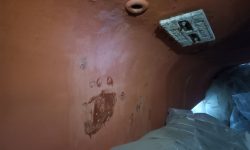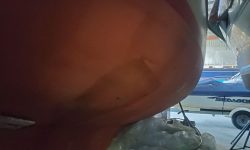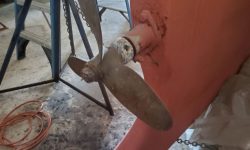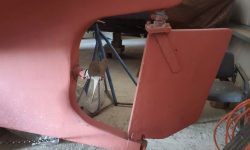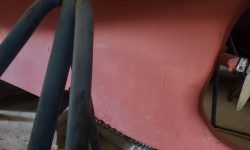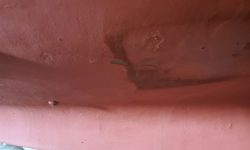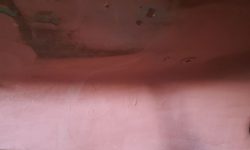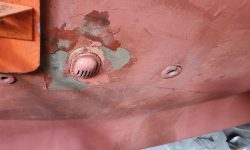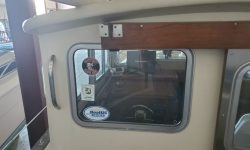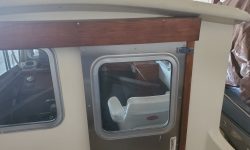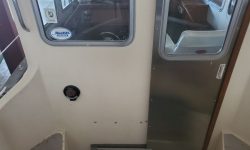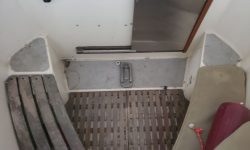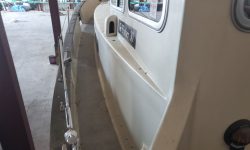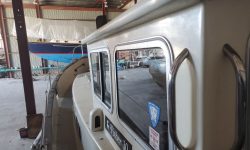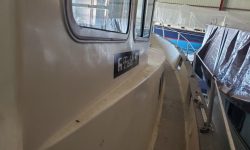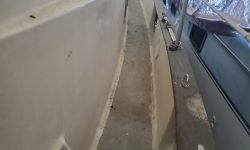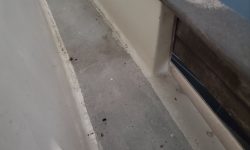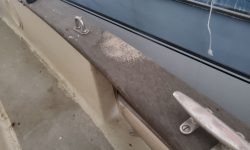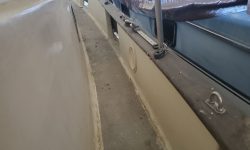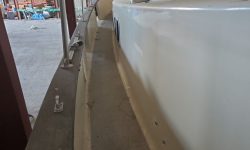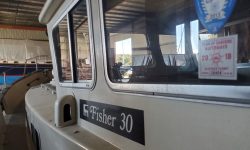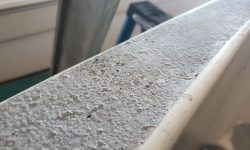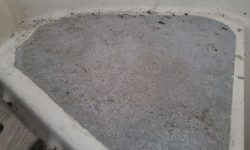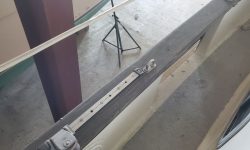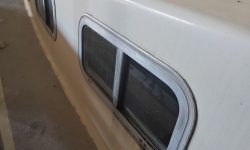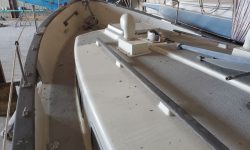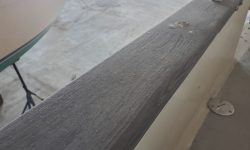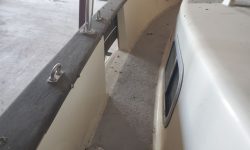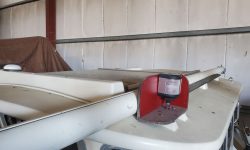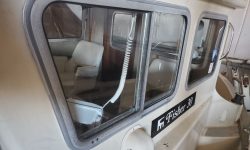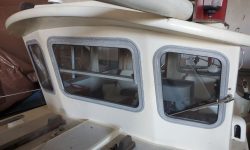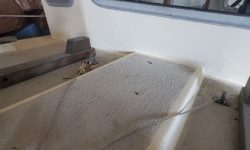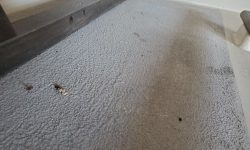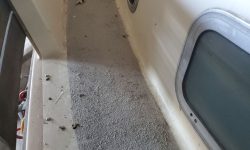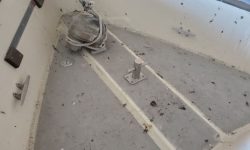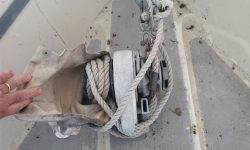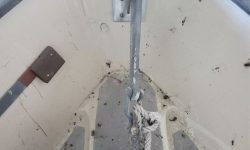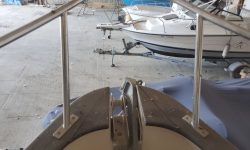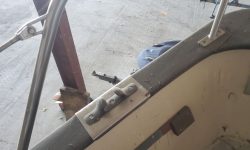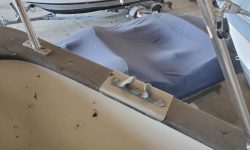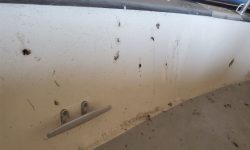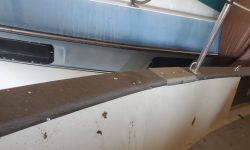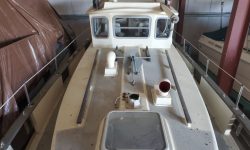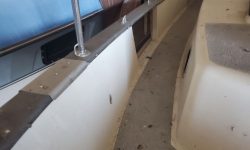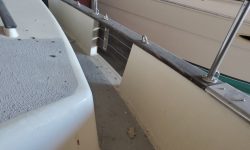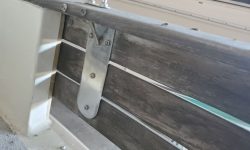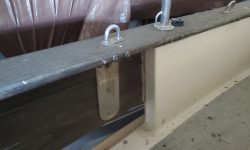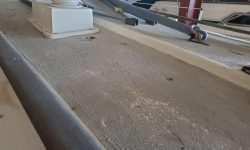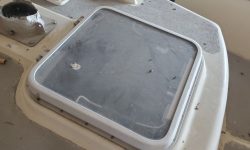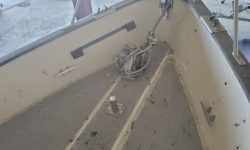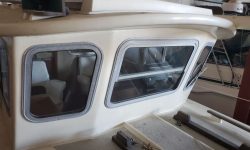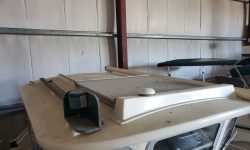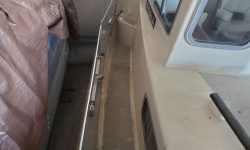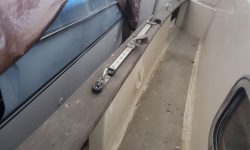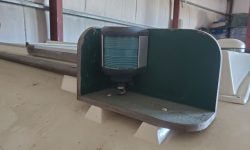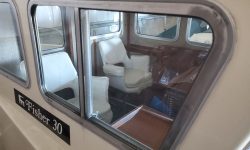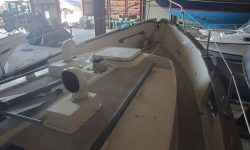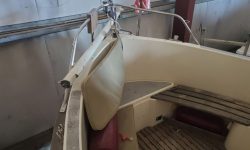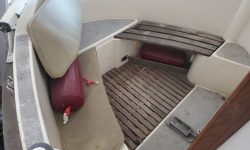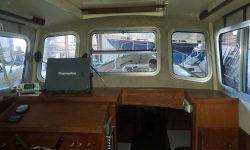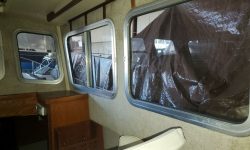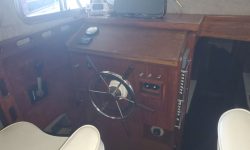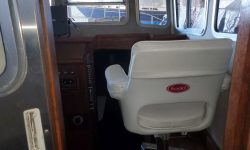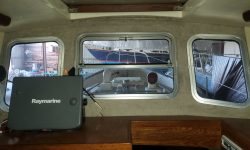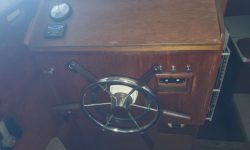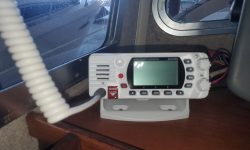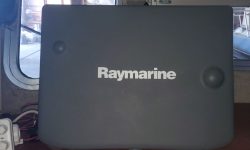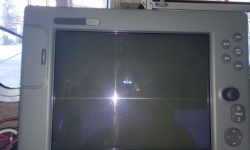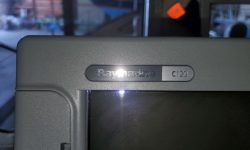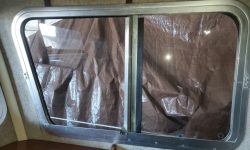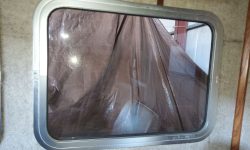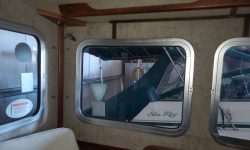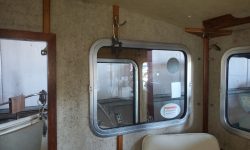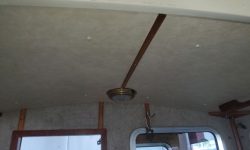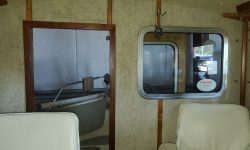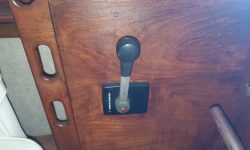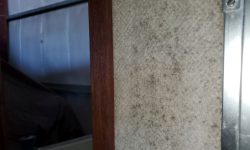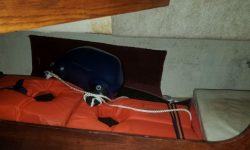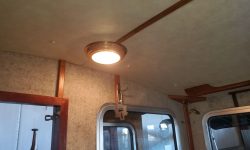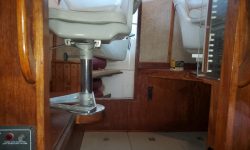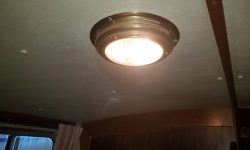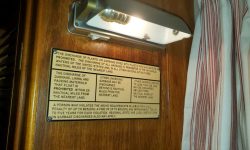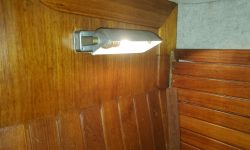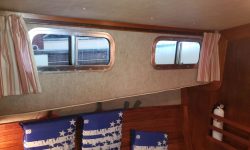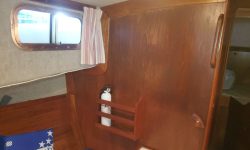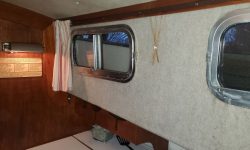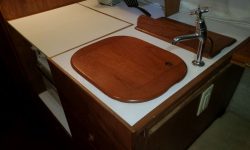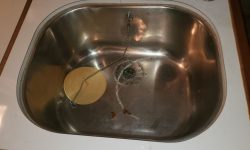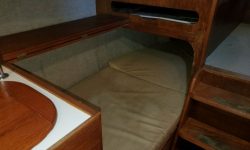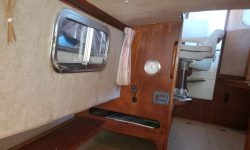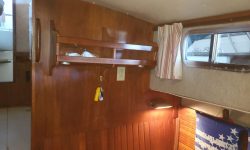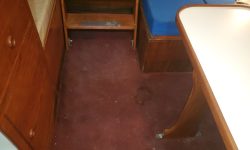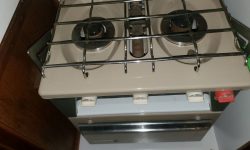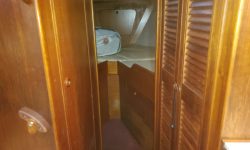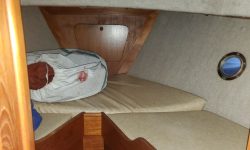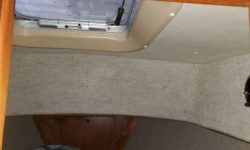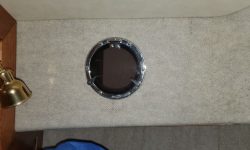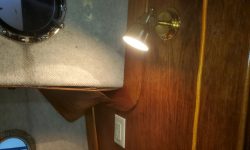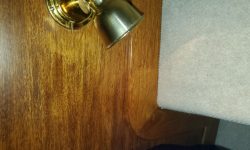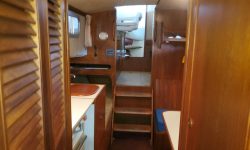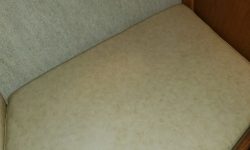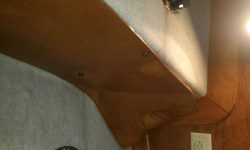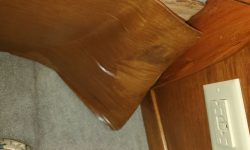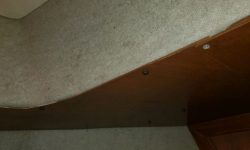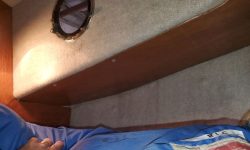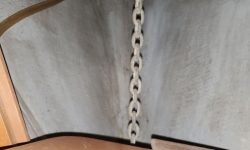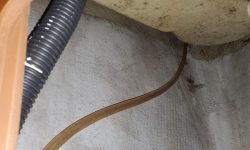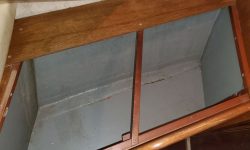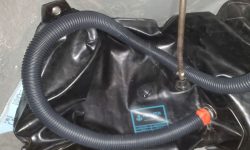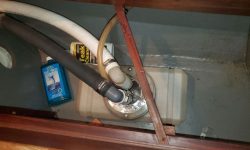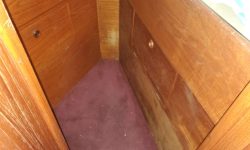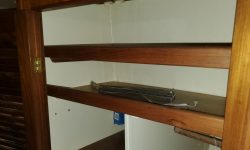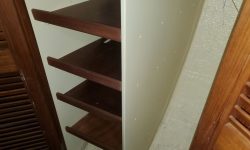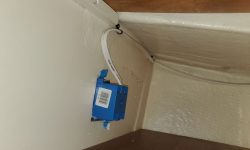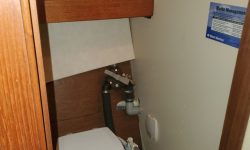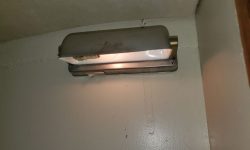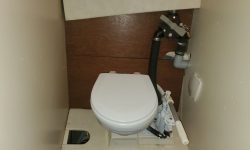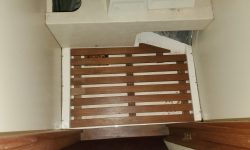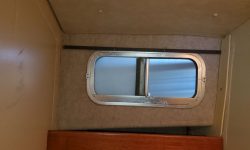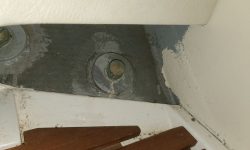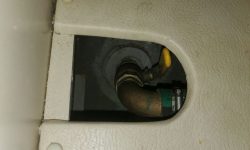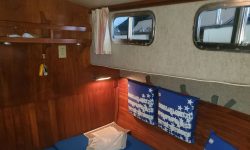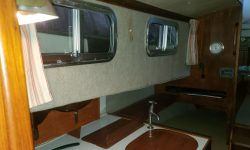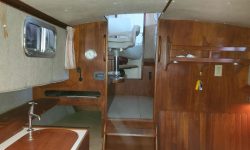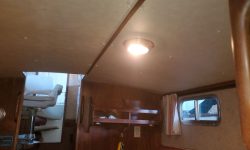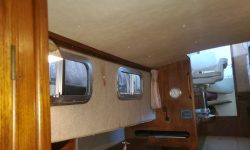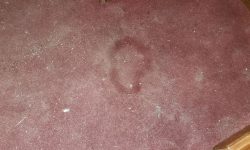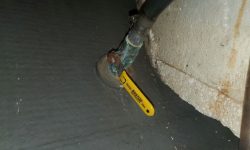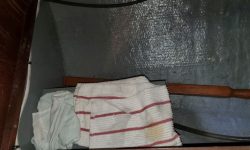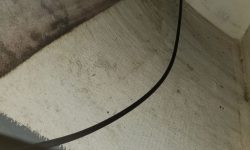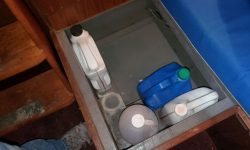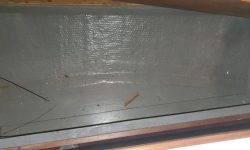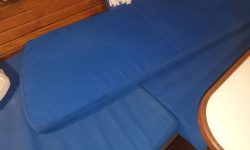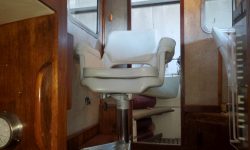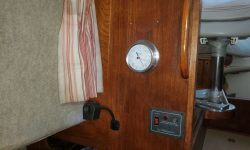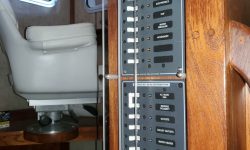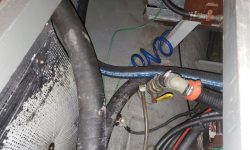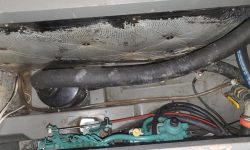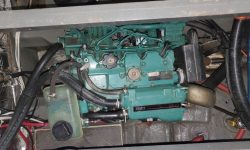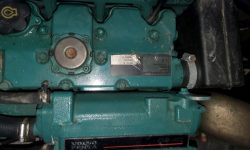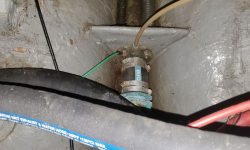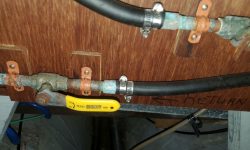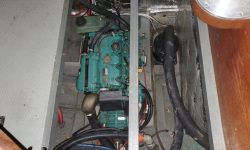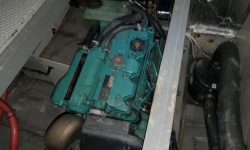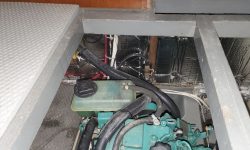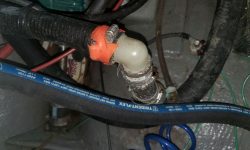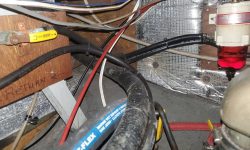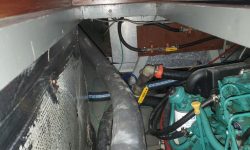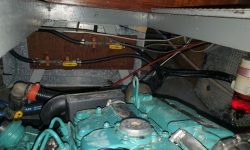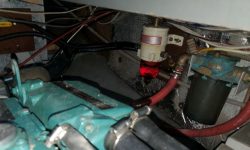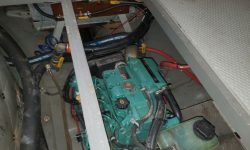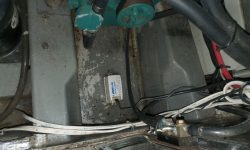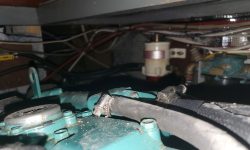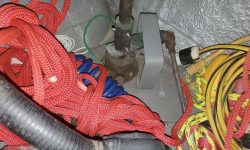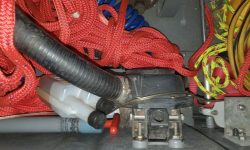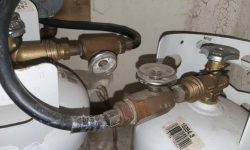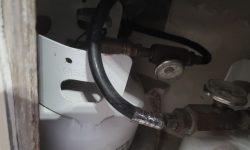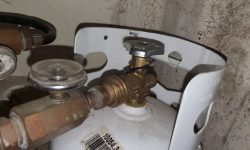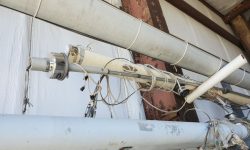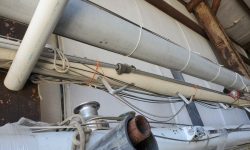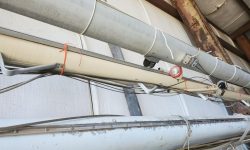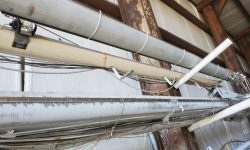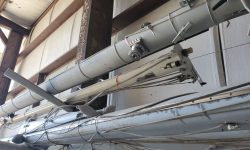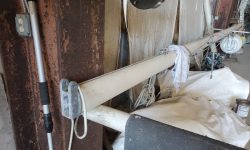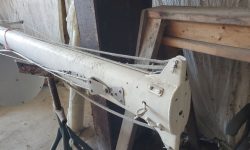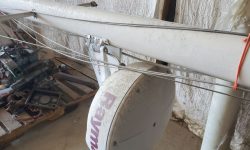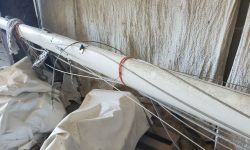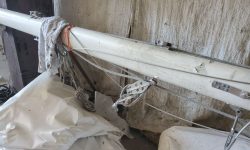Visual Inspection: Saturday, October 8, 2022
Laurie B, located at Mid-Coast Marine, Winterport, ME
Note: Click any picture for an enlarged photo gallery
Topsides: Topsides are painted, fair condition. Roller texture visible but otherwise sound. Exterior teak trim dark and dirty but in sound condition. With a modicum of cleanup to suit individual tastes, the hull exterior would appear quite respectable, particularly from a short distance. No major cosmetic or structural issues noted. Hull moldings appear generally fair beneath coatings. Chromed bronze hull ports in fair condition with some pitting. Paint surface is adequate but not glossy or of high-end “yacht” appearance. Any efforts toward full restoration would require removal of existing coatings.
Bottom: Bottom in generally good condition and typical for age. Some flaking of heavy layers of bottom paint, but overall sound. No significant issues noted. Can be used as is and recoated as needed; eventual stripping will be required. Running gear and rudder in good condition.
Deck and Cockpit: Dirty from storage. Nonskid gray, heavily textured product with roller or other application, a bit rough and untidy but effective underfoot. Nonskid is clearly a replacement for the original Treadmaster surface. Exterior teak trim dark and dirty but in sound condition. Restoration to varnish finish possible with significant effort. Cabin sides, bulwarks, and other smooth-finished areas in good condition and appear to have been painted in the past. Any full repainting/restoration effort would require removal of existing coatings, but existing condition, once thoroughly cleaned, would be satisfactory for most purposes.
Aluminum windows and ports (original) in good condition with newer rubber trim over the fasteners (exterior). Some evidence of leakage inside, particularly on the starboard side above the galley and, most notably, the forwardmost port (round) on the starboard side, where evidence of long-term leakage was obvious and caused some damage within (see interior section). Rebedding selected units to stop leakage would be desirable.
Running light housings in fair condition but in need of cosmetic maintenance. Manual anchor windlass (original) appears to be in operating condition. Original hardware in good condition.
No signs of structural issues noted on the deck areas. As with the hull, the main concerns going forward, which may be dealt with as one sees fit, are of a cosmetic nature only.
Pilothouse and Main Cabin: Pilothouse features two chairs that take up a lot of space but are comfortable for underway seating. Cabin sides covered with “mouse fur” in fair condition overall, but with some staining or mildew noted in some areas. Overhead is vinyl-covered plywood in good condition. All lights tested operational but are sparsely spaced; additional lighting, and upgrading to efficient LED fixtures, would be desirable going forward to improve utility and efficiency. Electronics are relatively late-model and appear in good condition. No immediate need for upgrades. Pilothouse sole (3X removable panels) original Treadmaster. Teak bulkheads and trim in good condition and as expected for a generally well-maintained boat of this age. Helm console is simple and uncluttered with newer electrical panels on the starboard side.
The main cabin in in generally good condition. Cushions are textured vinyl (quarterberth and forward cabin) and blue marine canvas (dinette)–good condition and functional, if dated. There’s room for improvement there depending on taste. The original galley and stove/oven are in good condition with apparently light use. Front-access icebox beneath galley appears functional but difficult to load and use. Icewater appears to drain to the bilge. Depending on cruising needs, an upgrade here would be nice, but this would work OK for weekends. Teak bulkheads and trim in good condition. “Mouse fur” lining on cabin trunk and hull, and vinyl-covered plywood overhead panels, in good condition with minor staining here and there. Carpeting on sole in fair condition. Various lockers beneath berths and elsewhere were basically clean and in good condition throughout. Plywood and vinyl-coated plywood panels cover the undersides of the sidedecks.
In the forward cabin, the starboard port had clearly been leaking for some time, leaving stains on the cabin liner and destroying the aft end of the plywood panel covering the underside of the sidedeck. Liner staining continued on the hull side beneath these areas. The ports above the galley also showed lesser signs of leaks. It would be good to remove these units in particular and rebed as soon as possible when the boat is returned to outdoor service; some rebedding schedule for the remaining windows should be considered and certainly undertaken if any other leaks appear.
Freshwater tankage appears to be a flexible bladder tank beneath the v-berth only. This capacity may not be sufficient for long-term cruising use. Head features a tiny holding tank that will soon have you knowing all shoreside pumpout facilities on a first-name basis. It can be pumped directly overboard with a valve if the boat is located in waters where such is legal.
Generally speaking, the cabin requires little of an urgent nature, and, like the exterior, a potential work list depends more on individual cosmetic tastes and intended usage.
Engine room and Mechanicals: Access through three removable panels in the pilothouse. The engine is newer than original and appeared in good condition. Engine room overall in fair to good condition, not an impeccable space but far from being a disaster. Consult the survey for particulars on items possibly needing more immediate attention. Certainly there’s room for improvement, but the engine room is functional and in better shape than on many (most) boats. No immediate red flags to be seen, though a thorough inspection would surely locate any number of nitpicky standards that aren’t being met.
Fuel tank beneath the cockpit appeared to be galvanized steel and in good condition where visible. Fuel lines and filter in sound condition. Electrical wiring in generally good condition if not approaching ideal installations. Plumbing and through-hull fittings in essentially sound condition but should be inspected regularly and upgraded before the true need arises.
Basic cable-type push/pull steering–little to go wrong unless the cable seizes. Emergency tiller located on board.
Masts and Rigging: Observed only in their racks in the storage building. Masts are dirty from storage. As noted in the survey and listing, the running rigging is due for replacement but could be used short-term if needed. Standing rigging may be original and, if so, should be carefully inspected with an eye toward replacing soon as a matter of course. Roller furler is an older unit but lacking any specific issues should work indefinitely. Masts have a painted finish that matches the boat, with no terrible cosmetic issues noted.
Summary: Laurie B meets expectations formed by the 2018 survey and current listing. She is not a perfect boat–few are–but in sound structural condition and acceptable cosmetic condition. I suspect that a significant cleaning would go a long way to improving overall appearance, especially on deck. Her asking price is within the expected range for Fisher 30s. The unique quality of these boats means there are not endless numbers to choose from on the open market. This boat could be used as is indefinitely, or serve as the basis for a major restoration depending on what you want her to be and how you intend to use her. There are no apparent structural issues on hull or deck, one of the good features of this model (Fishers were generally well-built and tend to be cared for by their owners). There’s room for improvement if desired, but few things that must be done, at least as far as I could tell and based on the previous survey and owner’s notes.


